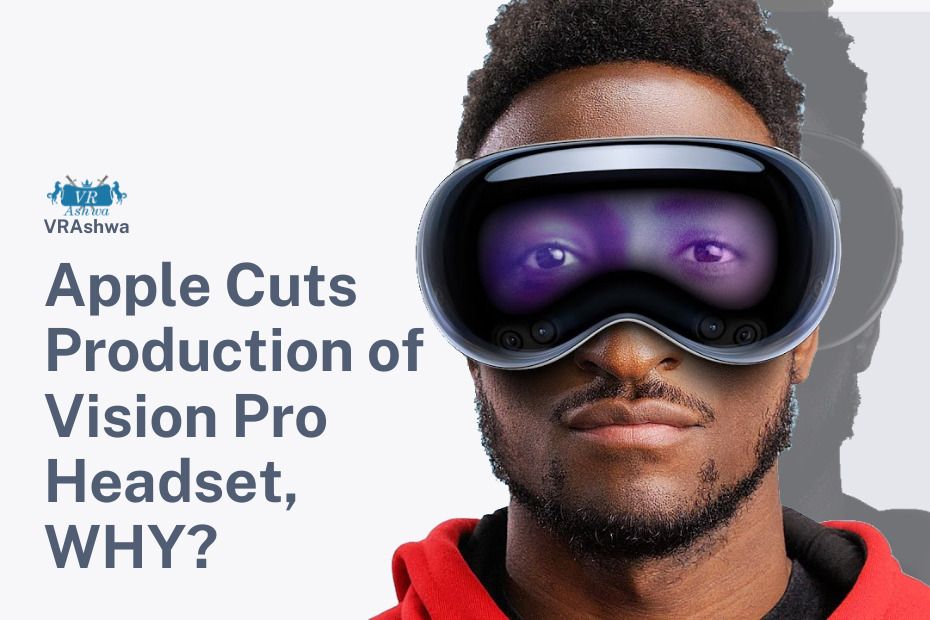Are we nearing a revolution where virtual reality seamlessly blends with our everyday lives? Enter Apple’s Vision Pro headset—the pinnacle of technological innovation. In this captivating journey, we explore the complexities, decisions, and market impact surrounding Apple’s audacious foray into the world of immersive experiences. Brace yourself as we unravel the enigma behind this groundbreaking device.
The Challenge of Complexity: A Technological Odyssey
The Vision Pro headset is a testament to Apple’s unwavering pursuit of excellence. Its design, laden with intricate components, poses an engineering and manufacturing feat. Curved motherboards, a sophisticated arrangement of twelve external cameras, and state-of-the-art materials such as carbon fibre and advanced alloys push the boundaries of what is possible.
To grasp the sheer complexity of the Vision Pro headset, imagine an orchestra performing a symphony of technological prowess. Like a skilled musician, each component must harmonize perfectly with the rest to create an unforgettable experience. However, words alone cannot do justice to the intricacy of the design. Visual aids, such as detailed images and informative infographics, would better illustrate the remarkable engineering that underpins this visionary device.
Timing and Pricing: A Balancing Act:
Why did Apple choose VR over waiting for AR to mature? The answer lies in the delicate balance of timing and market dynamics. Honor Agrana from Bloomberg Intelligence points out that establishing a beachhead now is crucial for achieving economies of scale and refining engineering capabilities. It sets the stage for a future transition to pure AR once the technology is viable on a consumer scale.
The pricing strategy for the Vision Pro headset has sparked debates. At $3,500, some sceptics question its appeal as a mainstream consumer product. Mark German offers an intriguing perspective, suggesting that a pricing range of $3,000 to $6,000 within the niche market would yield similar outcomes. However, Apple aims to break the $2,000 barrier by the end of 2025 or early 2026 to capture a broader audience.
Market Impact: The Prelude to Transformation:
Financially, the Vision Pro headset’s impact on Apple’s bottom line may be modest in the short term. However, its true significance lies in its role as a catalyst for VR’s expansion and refinement. By releasing the headset, Apple initiates a vital feedback loop—enabling user insights, fostering application development, and nurturing an ecosystem that propels the immersive experience forward.
While Apple’s pricing strategy may raise eyebrows, it is essential to consider the broader landscape. The potential market for VR headsets is evolving, and competition among tech giants is intensifying. Understanding how Apple’s Vision Pro headset fits into this landscape is essential. Exploring competitors’ pricing strategies and analyzing market trends would provide a comprehensive view of the industry dynamics at play.
Conclusion:
Apple’s Vision Pro headset is not merely a technological marvel; it represents a bold step toward reshaping our reality. As we traverse this journey, we glimpse the challenges of complexity, the importance of strategic timing, and the potential market impact. While the financial implications may seem restrained initially, the long-term vision is transformative.
Now, dear reader, I invite you to join the frontier of immersive experiences. Dive deeper into the world of Apple’s Vision Pro headset, explore its intricacies, and envision the possibilities. Stay informed, engage with the technological revolution, and become a part of the narrative as we usher in a future where virtual reality becomes an inseparable part of our lives. Sign up for our newsletter to stay at the forefront of innovation and be the first to experience the future.
